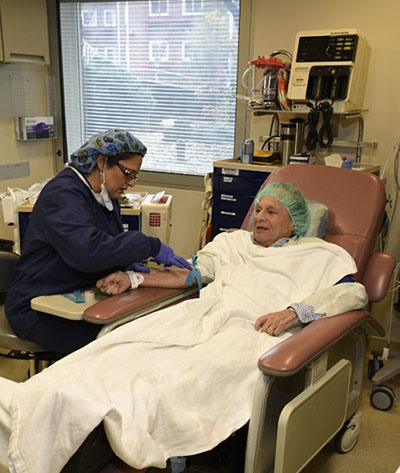Cataract Surgery Westchester County, NY
As a leading Westchester County cataract surgeon, Dr. Lippman understands that an important part to any treatment is patient education. Please read the information below to learn more about cataracts and the different forms of treatment offered by Dr. Lippman.
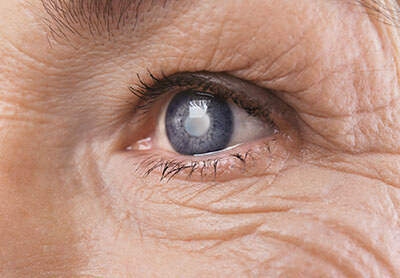
What Are Cataracts?
A cataract is the clouding of the normally clear lens of the eye. The eye’s lens works like a camera lens focusing light rays on the light-sensitive tissue at the back of the eye. When the lens is obscured, light rays cannot focus properly. As a result, images appear dull, colors look less bright and light from the sun or a lamp begins to appear unusually intense. As the lens gradually becomes more clouded, vision worsens. If left untreated, cataract(s) can lead to complete vision loss in the affected eye(s).
If you notice these symptoms and suspect that you might be suffering from cataracts, please use our contact page to schedule a one-on-one consultation with the highly experienced Westchester county cataract surgeon Dr. Lippman. To help him better assess your condition and determine the most suitable treatment, please complete our patient questionnaire.
Cataract Surgery
Currently, the only available cataract treatment is cataract removal. While many patients feel apprehensive about undergoing cataract surgery, the use of the latest surgical techniques makes it a very effective treatment with low risk of complications. In fact, every year more than 3 million Americans undergo this procedure, making it the most frequently performed surgical procedure in the United States. Dr. Lippman has fully embraced the Femtosecond Laser as an essential part of his cataract surgery because of the greater safety and precision it affords.
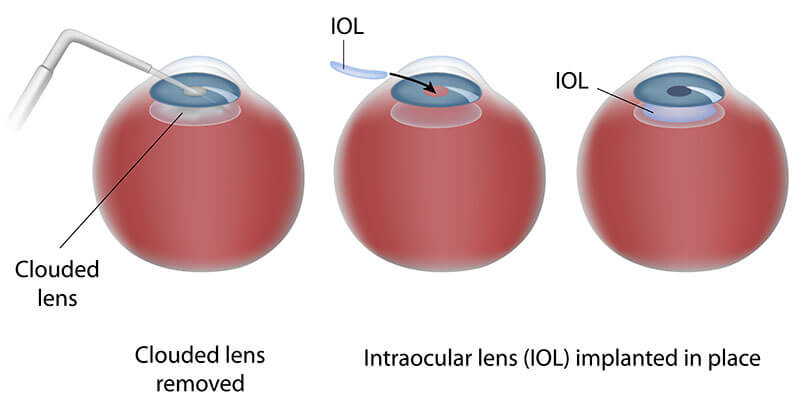
Dr. Lippman specializes in “no needle – no stitch” cataract surgery. He begins each cataract surgery by creating a tiny incision at the edge of the cornea. The small incision size promotes speedy, comfortable recovery and does not require post-operative sutures. During the next step of the procedure, Dr. Lippman gently opens the bag enclosing the eye’s lens and uses a special ultrasonic probe (phacoemulsifier) to remove the clouded lens. The lens is removed by breaking it into microscopic particles and then carefully suctioning these particles out of the eye.
After the clouded lens is removed, Dr. Lippman replaces it with a sophisticated intraocular lens implant (IOL) such as restor. “Active Focus”. The IOL becomes a permanent part of the eye, providing patients with clear vision at various distances, often without glasses. The complete cataract surgery takes 10 to 15 minutes to complete. Dr. Lippman performs it on an outpatient basis, using either eye drop anesthesia or a local anesthetic.
During Cataract Surgery
After Cataract Surgery
After Cataract Surgery
While each individual heals somewhat differently, many of Dr. Lippman’s Westchester county patients, including Mount Vernon, New Rochelle, Scarsdale and White Plains cataracts patients, report a significant improvement in their vision immediately after their surgery. The vast majority of patients return to work and their normal lifestyle routines within a few days following their cataracts treatment.
While cataract surgery usually delivers permanent vision improvement, in rare cases the membrane “envelope” covering the IOL becomes clouded over time. This cloudy membrane is called an “after cataract” and it causes symptoms similar to those of cataracts — hazy vision, glare, haloes and/or streaks of light. About 10 percent of patients who develop “after cataracts” require additional treatment, which is delivered with a special YAG laser and takes only a few minutes.
The YAG laser has a powerful infrared beam that opens a window in the cloudy membrane without pain, which is why the YAG procedure is usually performed without anesthesia. Since there is no incision, there is no risk of bleeding or infection. Vision is often restored within a few hours. To reduce the risk of post-operative inflammation, Dr. Lippman usually recommends that his Westchester County cataracts patients use special eye drops for about a week.
If your vision has become cloudy due to cataracts, please consult with Dr. Lippman. As one of the most highly regarded Westchester county refractive and cataract surgeons, he has vast experience in these areas of eye surgery. He has helped numerous patients restore clear vision by providing them with advanced eye surgeries, and he is deserving of your trust.
Schedule Evaluation
Click the button below to schedule your evaluation today!
What Is A Cataract?
With a clear normal lens, images are focused clearly on the retina and vision is sharp. With the development of a cataract, the lens is cloudy, causing the image to become blurred and yellowed. Vision is hazy and colors become faded.
Over fifty percent of people over the age of 60 and quite a few younger than that suffer from cataracts. A cataract is a progressive clouding of eye’s natural lens that interferes with light passing through the retina. Sufferers usually describe the condition as being similar to looking through a waterfall, or a piece of wax paper, with a gradual blurring or dimming of vision. Reading may become more difficult and driving a car can actually become dangerous. Cataract sufferers may also be troubled by bothersome glare, halos around lights, or even double vision. Currently, there is not treatment to reverse or prevent the development of cataracts. Once they form, the only way to achieve clear vision again is to physically remove the cataract from the eye.
The “No Needle No Stitch” surgery is performed on an outpatient basis at our modern state of the art Eye Surgery Center of Westchester county and most people return to work within one to three days. As with any surgical procedure, individual results cannot be guaranteed and side effects and complications may occur. We offer Cataract consultations. Contact us to schedule your appointment.

Cataract Symptom Checker
Click the button below to see check out our interactive Cataract Symptom Checker to if you are experiencing symptoms of having cataracts.
Cataract Surgery Procedure
A very tiny incision is made at the edge of the cornea. Such an incision promotes fast and more comfortable healing and does NOT require sutures.
The bag of the lens is opened and a special ultrasonic probe (phacoemulsifier) removes the cloudy lens. A small foldable artificial lens is inserted through the same small incision to replace the cataract lens. The final replacement lens is shown in place. The tiny “no stitch” incision does not require sutures.
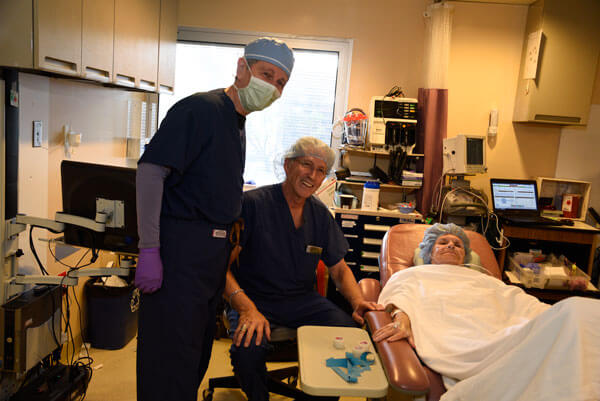
Dr. Lippman performs cataract surgery on an outpatient basis, using either eye drop anesthesia or a local anesthetic. The surgery take only a few minutes. The cataract is broken into microscopic particles using high-energy sound waves and is then gently suctioned from the eye. This advanced technique is called phacoemulsification. To compensate for the removal of the eye’s natural lens, an intro-ocular lens (IOL) is implanted into the eye.
Dr. Lippman has vast experience in this area and has helped develop many of the techniques of cataract surgery now used. His staff is very experienced as well, and are also deserving of your trust.
Everyone heals somewhat differently, but many cataract patients report an improvement in their vision right away. Most patients return to their normal work and lifestyle routines within a few days.
Post Cataract Surgery
In some patients after cataract surgery, the membrane or “envelope” into which the intraocular lens is placed will become cloudy over time. This cloudy membrane is called an “after cataract” or posterior capsular opacificaton. Dr. Lippman goes to great lengths to “polish” the inside of the capsule bag to try and prevent this from happening. When this does happen, the symptoms are similar to a developing cataract and the vision gradually fades. Other symptoms such as glare, halos, or streaks of light may occur. In about 10% of patients, treatment is required and this is easily accomplished with the YAG Laser.
YAG Laser Surgery for After Cataracts
The YAG laser has an extraordinarily powerful infrared beam that opens a window in the cloudy membrane without pain. The procedure takes only a few minutes and is performed without the need of anesthesia at the Eye Surgery Center of Westchester county.
Since there is no incision, there is no risk of bleeding or infection. Vision is often restored within a few hours. Afterwards, patients use eye drops for about a week.
Cataract Surgery & IOLs
Dr. Lippman is proud to offer his patients the advanced Femtosecond Laser Assisted “no stitch — no needle” cataract surgery in conjunction with implantation of sophisticated hitech intraocular lenses (IOLs). This combination of procedures offers his Westchester county cataracts patients a once-in-a-lifetime opportunity to greatly improve their vision and achieve freedom from glasses.
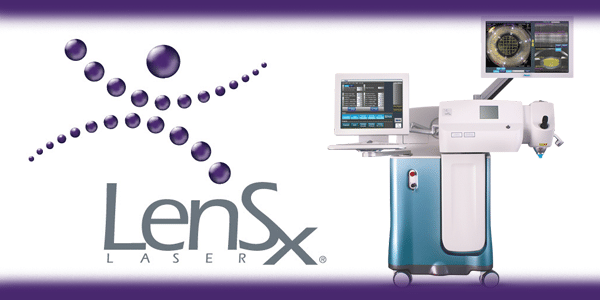
Dr. Lippman performs more than 800 cataract surgeries per year, and he and his team members are experts in the latest cataract surgery evaluation techniques and intraocular lens (IOLs) measurements. Dr. Lippman offers a variety of lens implants, including most “premium IOLs” currently on the market. The purpose of this page is to provide patients with an overview of the various IOLs types, as well as a comparison of their advantages, disadvantages and costs. While patients are welcome to peruse this information, and educate themselves about their options, please note that only a one-on-one consultation with Dr. Lippman will allow you to determine which IOL is the best for you.
Premium IOLs Options
About one-third of patients who undergo cataract surgery in Westchester County choose to receive one of the premium lens implants. If you are interested in receiving these IOLs, Dr. Lippman’s assistants will be happy to talk to you about affordable payment options.

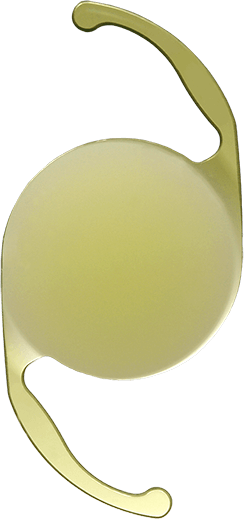
Offer Clarity, Stability and Quality to Cataract Patients Who Value Visual Performance
Dr. Lippman offers several types of implantable intraocular lenses: monofocal lenses, multifocal lenses, accommodating lenses and astigmatism-correcting Toric lenses.
Monofocal IOLs
These lenses work best at one distance. In most cases, monofocal IOLs are implanted to provide the patient with good distance vision; however, the patient still requires eyeglasses to see up close. Everyday tasks that most often require glasses include reading, sewing, working on the computer and seeing prices in a store. The advantage of receiving basic monofocal IOLs is that they are often completely paid for by Medicare and most insurance companies.
Multifocal IOLs
As the name suggests, these lenses provide good vision at various distances. Dr. Lippman specializes in implanting a range of multifocal IOLs. Multifocal IOLs can provide clear vision in distance, up-close and in-between. In addition, many cataracts patients who choose to receive these implants do not require glasses after their treatment.
Astigmatism-Correcting IOLs
Dr. Lippman is one of the eye surgeons who offer the advanced astigmatism-correcting Toric IOLs. These IOLs received FDA approval in September 2005 and have since improved the vision of thousands of patients suffering from both cataracts and astigmatism. Toric IOLs are the only IOLs on the market that can correct significant astigmatism and help eliminate a patient’s dependence on glasses.
Cataracts & Astigmatism
A cataract is a clouding of the eye’s lens, interfering with quality of vision making driving a car, reading a newspaper or seeing faces more difficult.
Astigmatism is caused by an irregular curvature of the cornea and makes seeing fine detail difficult. This is a separate vision problem from cataract. During cataract surgery, a patients cloudy lens is replaced with an artificial lens (IOL) so that light can once again travel unimpeded to the back of the eye.
Typically, patients receive a monofocal IOL that doesn’t correct other vision problems such as astigmatism. If you have astigmatism you may still experience blurred and distorted vision after surgery because a monofocal IOL cannot correct pre-exsisting corneal astigmatism. High quality vision is not regained unless this astigmatism is corrected as well.
The Acrysof IQ Toric IOL represents a giant leap forward in that when this foldable single piece lens is used to replace the clouded lens it provides clear distance vision for patients with cataract and astigmatism usually without the need of glasses.
Because your implant choice is an important decision in your cataract surgery be sure to discuss any questions you may have with Dr. Lippman and his staff. This is the best way to get clear answers that apply specifically to your vision and the cataract procedure you are considering.
Astigmatism-Correcting Toric IOLs
Until recently, patients who suffered from both cataracts and significant astigmatism had to undergo cataract surgery and astigmatic keratotomy (a procedure involving cutting the cornea) to achieve clear vision. However, today’s ophthalmological advancements have largely eliminated the need for astigmatic keratotomy. Instead of adjusting the shape of the cornea by making several incisions, Dr. Lippman can now correct the form of the cornea by implanting special intraocular lenses (IOLs). Referred to as Toric IOLs, these sophisticated lens implants received FDA approval in September 2005 and have since improved the vision of thousands of patients suffering from both cataracts and astigmatism.
Alcon AcrySof Toric IOLs correct astigmatism by adjusting the shape of the eye so it looks more like a baseball instead of an oblong football. This adjustment can effectively decrease blurriness associated with astigmatism and allow patients to see at various distances without glasses. Previously, astigmatic patients who received cataract surgery in Westchester county often still had to wear thick eyeglasses after their surgery to compensate for the irregular shape of their eyes.
After undergoing cataract surgery with Toric IOLs in Westchester county, most patients do not require glasses for distance and intermediate vision. Depending on the degree of their astigmatism, some of them might still need glasses for close-up vision, such as when reading. However, their new prescription is usually significantly lower. When consulting astigmatic patients, Dr. Lippman stresses the advantages of Toric IOLs over other IOLs because Toric lenses are the only IOLs on the market that can correct significant astigmatism.
Schedule a one-on-one consultation with Dr. Lippman and learn more about your IOLs options. In addition, he can provide expert advice for potential Westchester county, including Peekskill, New Rochelle and White Plains LASIK, cataract surgery, glaucoma therapy, PRK and other procedures patients.
Cataract FAQs
Dr. Lippman and his team of experienced medical professionals are dedicated to providing Westchester county cataracts patients, with the best possible surgical results in the safest, most comfortable manner possible. In order to relieve patients’ anxiety and prepare them for cataract surgery both physically and psychologically, we conduct thorough consultations. In addition, we encourage patients to ask as many questions as possible, and we take the time to provide thorough, clear answers. Please review this list of frequently asked questions to learn more about cataract surgery, recovery and insurance coverage.

